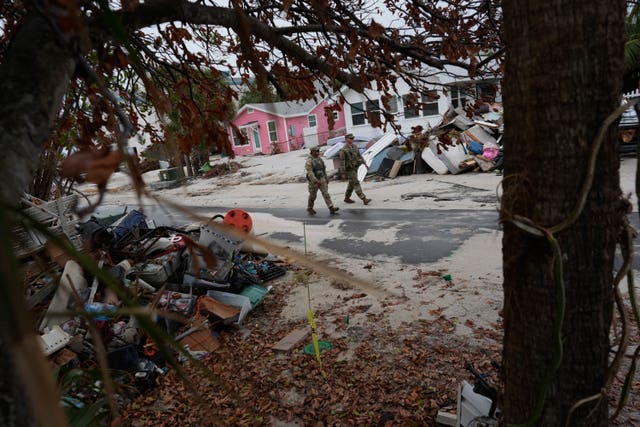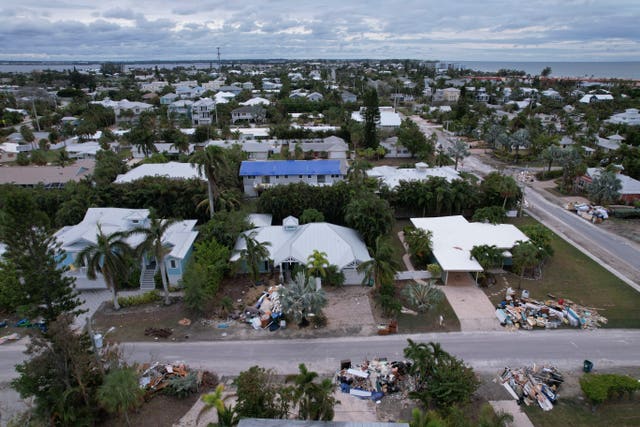Climate change boosted Helene’s deadly rain and wind – report
Scientists say the same is likely to be true for Hurricane Milton.

Human-caused climate change boosted Hurricane Helene’s devastating rainfall by about 10% and intensified its winds by about 11%, scientists have said.
A new flash study on the issue was released as a strengthening Hurricane Milton threatens the Florida coast less than two weeks after Helene’s path of destruction.
Ocean temperatures in the Gulf of Mexico were about 2C above average, the WWA said.
Ben Clarke, a study co-author and a climate researcher at Imperial College London, said in an interview: “Hurricane Helene and the storms that were happening in the region anyway have all been amplified by the fact that the air is warmer and can hold more moisture, which meant that the rainfall totals – which, even without climate change, would have been incredibly high given the circumstances – were even higher.”
The same is likely to be true for Milton, the authors added.

Helene made landfall in Florida with record storm surge 15ft high and catastrophic sustained winds reaching 140mph, pummelling Georgia, the Carolinas, Tennessee and Virginia.
It decimated remote towns throughout the Appalachians, left millions without power, mobile phone service and supplies and killed over 230 people.
Search crews in the days following continued to look for bodies. Helene was the deadliest hurricane to hit the mainland US since Katrina in 2005.
Helene dumped more than 40 trillion gallons of rain – an unprecedented amount of water – onto the region, meteorologists estimated.
That rainfall would have been much less intense if humans had not warmed the climate, according to the WWA, an international scientist collaborative that runs rapid climate attribution studies.
“When you start talking about the volumes involved, when you add even just a few percent on top of that, it makes it even much more destructive,” Mr Clarke said.
Hurricanes as intense as Helene were once expected every 130 years on average, but today are about 2.5 times more likely in the region, the scientists calculated.
The WWA launched in 2015 to assess the extent which extreme weather events could be attributed to climate change.
The organisation’s rapid studies are not peer-reviewed but use peer-reviewed methods. The team of scientists tested the influence of climate change on Helene by analysing weather data and climate models including the Imperial College Storm Model, the Climate Shift Index for oceans and the standard WWA approach, which compares an actual event with what might have been expected in a world that has not warmed about 1.3C since pre-industrial times.
A separate analysis of Helene last week by Department of Energy Lawrence Berkeley National Lab scientists determined that climate change caused 50% more rainfall in some parts of Georgia and the Carolinas, and that observed rainfall was “made up to 20 times more likely in these areas because of global warming”.
That study was also not peer-reviewed but used a method published in a study about Hurricane Harvey.
Kim Cobb, director of the Institute at Brown for Environment and Society, said there are uncertainties in exactly how much climate change is supercharging storms like Helene, but “we know that it’s increasing the power and devastation of these storms”.

Analysis is already indicating climate change made possible the warmed sea temperatures that also rapidly intensified Milton. Mr Clarke said the two massive storms in quick succession illustrates the potential future of climate change if humans do not stop it.
“As we go into the future and our results show this as well, we still have control over what trajectory this goes in as to what risks we face in the future, what costs we pay in the future,” he said.
“That just hinges on how we change our energy systems and how many more fossil fuels we burn.”





